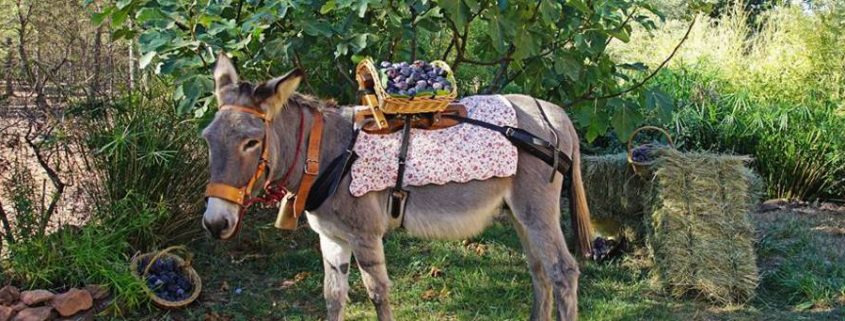The term fig has appeared in the thirteenth century.
The word comes from the provençal figo who borrowed it from Latin ficus. The fig is a fruit / flower of the common fig tree emblem of the Mediterranean basin.
It is considered the oldest domesticated fruit. It is classified in three varieties: the green fig (or white), the gray figs (or red) and the black figs (or purple, more often harvested in figs of mouth as with Solliès-Pont). Fig is a highly symbolic fruit of the Mediterranean civilization. In Provence, it occupies a historical, cultural, gastronomic, economic place …. In the world, there are a very large number of fig varieties. For Provence alone, they are already numerous. If today there are more than 700 varieties of different figs, “Solliès fig” is unique. By producing 71% of the national fig production, the Solliès-Pont basin is the number 1 in France. More than 100 Var producers cultivate on 306 hectares of orchards this southern fruit, symbol of the Mediterranean art.
Solliès fig enjoys an PDO since 2011, it is the only fig PDO of France. The cultivated variety, named Black Bourjassotte or Purple of Solliès, finds in this basin of production, the ideal conditions of maturation and development taste. The particularly important sunshine of this basin, coupled with the abundant water resources that the sector offers, favors vigorous trees and an ideal ripening of the fruit.
Baptized ‘figuon’ by the elders, fig with a green yellow color and very sweet pink flesh, this firm and melting variety endemic to the canton of Salernes in the Var retains a very good perfumed taste. It is harvested between August and September and differs from its cousin Solliès-Pont violet by its very sweet pink flesh and its specialization for processing.
Fruit picking mainly for processing is done every other day from mid-August to the end of September as the fig begins to ripen and the fruit is already full of sugar. This exceptional fruit is not harvested to be tasted like a fresh fig but to be transformed. Its firm texture allows it to lend itself to all culinary quirks by working with the sandstone of desires and imagination. Its perfect holding for freezing and cooking makes it usable in many areas, salty or sweet. But it is mostly dedicated to being used in whole fruit confit in its juice.



